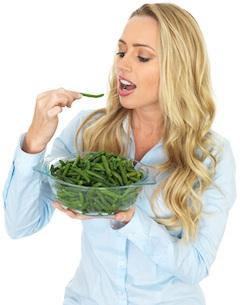
Even foods that are good for your health may have some properties that make them less than ideal.
And some things that you eat are just plain bad for you.
Lectins are often cited as a property in foods that you should avoid. However, it’s hard to completely stay away from something that’s found in much of the food that you eat.
Lectins are proteins, and they exist in significant amounts in about 30 percent of foods.
They are especially concentrated in grains and legumes.
If you often eat a lot of lectin-containing food and you’re lacking in the enzymes to digest lectins, these proteins may enter the bloodstream.
They may cause nutritional deficiencies and digestive problems. They can also damage the walls of the intestines (1).
Some believe that lectins are partially responsible for creating a “leaky gut” that leads to autoimmune disease.
Lectins aren’t as scary as some people make them out to be.
So how dangerous are dietary lectins?
While lectins can be somewhat harmful to your health, there are many ways to manage your intake. Read on for more insights.
What Are Lectins Anyway?
All flora and fauna found in nature contain lectins.
Lectins are proteins that bind carbohydrates within the organism (2).
This can be helpful for encouraging particles at the molecular level to interact with one another. It is also necessary for some physiological functions, but it can be harmful in some cases.
Imagine that the surface of any molecule has tiny hooks, like Velcro. Those are lectins. If the right molecule comes along, it will attach itself to those lectins.
The lectins on the surface of E. coli cells select and stick to certain cells of the intestinal tract.
Viruses can attach to and enter certain cells with the help of lectins.
These proteins play various roles in normal physiological functions, but they have also been implicated in causing cavities, inflammatory bowel syndrome and celiac disease (3).
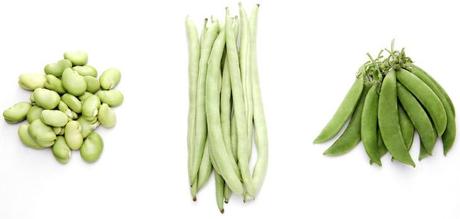
Fruits and vegetables that contain lectins are:
- Tomatoes
- Potatoes
- String beans
- Carrots
- Zucchini
- Carrots
- Green peas
- Soybean, mung bean and lentil sprouts
- Cantaloupe
- Grapes (especially the seeds)
- Cherries
- Pomegranates
- Raspberries
- Blackberries
- Beans
Wheat germ also contains lectins, as do peanuts, dairy products, many types of beans, nuts and seeds, garlic, marjoram, allspice and mushrooms.
However, variation can occur from day to day and from plant to plant. In addition, the lectins found in dairy, nightshades, nuts and seeds aren’t as bad for you.
Plants may contain lectins as a survival mechanism.
One of the reasons that it is necessary to soak and properly cook dried beans is to reduce their lectin levels (4).
For example, castor beans contain so many lectins that they are poisonous to most animals. This keeps the castor bean species going.
The lectin found in castor oil has even been synthesized as a poison called ricin, which is used in biochemical warfare (5).
Lectins aren’t all bad.
However, if you eat a concentrated amount, you could end up with digestive distress, and if you eat them frequently, you may end up with chronic illness.
KEY POINT: Lectins are proteins that target and bind carbohydrates. They are found in many foods, but they are more concentrated in grains and legumes.
Consuming a Lot of Lectins Can Be Detrimental

Humans don’t have the proper enzymes necessary to digest lectins.
As they pass through the stomach, lectins remain largely unaltered. When they reach the intestines, they can attach to the lining of the gut (6).
In one study that was conducted on rodents, lectins made it through the stomach and attached themselves to the small intestines.
They temporarily thickened the walls of the small intestines, affecting their ability to absorb nutrients.
They also changed the length and function of the entire digestive tract. These effects were mostly reversed upon elimination of lectin from the diet (7).
Lectins can enhance pancreas growth and increase the release of digestive enzymes (8).
Lectins make it difficult for the body to maintain its own cells.
Therefore, people with damage from lectins may experience more digestive problems. This may occur gradually (9, 10).
Phytohaemagglutinin are the most commonly studied lectins. Kidney beans are one of the main sources of these proteins.
If you eat raw kidney beans, you can experience major pain in your abdomen, diarrhea and vomiting. These are symptoms of lectin toxicity (11).
In fact, one hospital offered free food to customers during a “healthy eating day” in 1988.
Eleven of the customers who had eaten a large number of kidney beans experienced extreme digestive distress that day (12).
However, you’re not likely to eat raw kidney beans.
If you purchase canned beans, they have been soaked and cooked prior to canning.
Dried beans must be prepared properly to destroy many of the lectins.
KEY POINT: Lectins can be a major stomachache. They are poisonous when consumed in large quantities.
Too Much Dietary Lectins Can Cause Leaky Gut
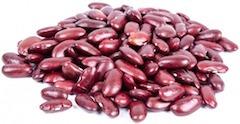
The gut wall becomes damaged when lectins attach to it. The tiny hairs that line the mucosa become damaged and become less able to extract nutrients from food.
In a normal intestinal lining, the cells are tightly packed. They form what is referred to as “tight junctions.”
This prevents unwanted substances and molecules from leaking through the intestinal walls and entering the bloodstream (13).
These intestinal cells and their tight junctions are highly linked to immune processes (14). When they are compromised, immune responses to antigens change.
As lectins enter the bloodstream through the now-permeable intestinal wall, they attach to glycoproteins on the outside of cells (15).
KEY POINT: Consistently consuming lectins can damage the lining of the intestines and create a leaky gut that allows unwanted substances into the bloodstream
Overexposure to Lectins Can Trigger Autoimmune Disease
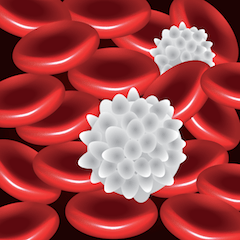
Lectins may also target antibodies, which help fight disease. In reaction, the immune system attacks the cells.
If the lectins are bound within the tissues of the body, the body may attack itself (16).
Wheat gliadin is a lectin that causes celiac disease (17). It is often referred to as the “celiac disease toxin” (18).
People who are sensitive to this lectin may have a deficiency in certain peptides and a deficiency in their immune systems.
The autoimmune disease diabetes mellitus is linked to the lectin found in tomatoes.
Researchers have found connections between lectins and rheumatoid arthritis as well (19).
KEY POINT: Although autoimmune diseases are connected to deficiencies somewhere in the immune system, some researchers believe that they are caused or exacerbated by certain lectins.
Infographic (Pin, Share or Embed)

Share This Infographic On Your Site
<p><a href='https://www.authoritydiet.com/what-lectin-foods-high-lectins/'><img src='https://www.authoritydiet.com/images/i/lectins-hd.jpg' border='0' /></a><br /><strong>Please include attribution to AuthorityDiet.com with this graphic.</strong></p>
You Can Remove Lectins by Cooking Your Food
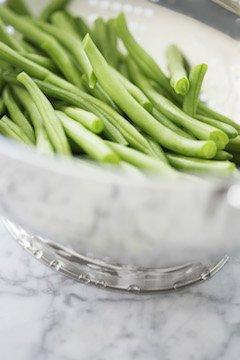
Followers of the Paleo diet typically don’t eat legumes because they contain lectins.
Although proper preparation methods can reduce or eliminate lectins in certain foods, if you don’t know how the food was cooked, you may want to avoid it.
However, legumes contain carbohydrates, fiber and protein, and they can be very nutritious.
Research shows that simply soaking and boiling legumes for adequate amounts of time can remove virtually all of the lectins (20, 21).
If you don’t soak your beans long enough, you may not be able to encourage the heat to penetrate deeply enough to destroy all of the toxins.
You can’t just bake beans under dry heat, either. Research shows that dry heat doesn’t inactivate the lectins like boiling does (22).
In addition, low temperatures can actually increase lectin activity. This is why a slow cooker may not be the ideal vessel for cooking beans (23).
The amount of hemagglutinating units in raw red kidney beans is between 20,000 and 70,000 hau. After cooking them properly, red kidney beans only contain about 200 to 400 hau.
Some research has shown that soybeans only need to be boiled for 5 to 10 minutes to eliminate almost all lectin activity (24).
KEY POINT: Properly soaking and boiling beans can remove almost all of the lectins, allowing you to eat them safely.
Soak, Sprout and Ferment Legumes to Make Them Safer
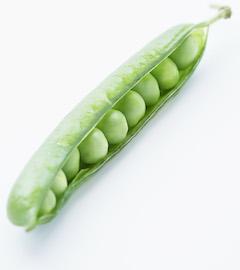
Both lectins and phytates get in the way of your body’s absorption of nutrients (25, 26).
Although boiling under significant heat can reduce lectins in food, you can reduce the lectin activity without heat treatment.
Soaking seeds and grains before allowing them to germinate, or sprout, can help reduce lectins and phytates.
However, be careful when you sprout legumes. Sprouting certain types of seeds or legumes, like lentils and alfalfa, can actually increase their lectin activity.
If you ferment seeds and grains, you are essentially allowing beneficial bacteria to eat the lectins. This can reduce lectin activity in foods, making them easier on the digestive system (27, 28, 29).
Although nowadays most grains are processed in food manufacturing facilities, grains were traditionally fermented before consumption.
KEY POINT: You can soak, sprout or ferment grains to reduce their lectin activity. Although you may soak and sprout legumes, you should still boil them before eating.
Do You Have To Worry About Lectins?
Although lectins can be harmful and downright poisonous, they are not usually dangerous when consumed in the typical diet.
As long as you prepare lectin-rich foods properly, you shouldn’t experience any harmful effects.
If you have digestive issues or an autoimmune disease, you probably already know that your diet plays a large part in your condition.
You may see improvements in symptoms if you limit the amount of lectins in your diet.
However, foods that contain lectins have a lot of other beneficial nutrients, so you should make sure that you eat a variety of fresh, colorful and well-rounded foods.
What do you think of dietary lectins? Share your thoughts below in the comments.

